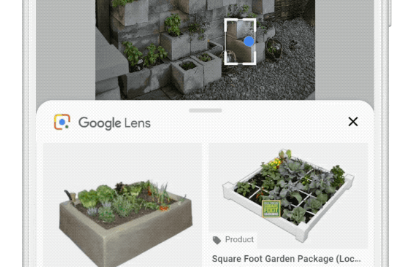
Google Changes the Search Landscape on its Birthday
Happy Birthday Google!
We probably should have expected that Google would be throwing a celebration for their 20th anniversary. And by “celebration” I really mean completely changing the search landscape again. So, on Monday, September 24, Google made a series of announcements to show off their long-term plan to completely alter how search works … and some of it has already been implemented for a few months now.
Google processes billions of searches each day. Google Image search accounts for a little over a quarter of that. That means that hundreds of millions of searches every day are conducted on Google Images. They released a ton of information about the changes they’re making, everything from the consumer journey to neural networks to new formats that look suspiciously like Pinterest, but I want to focus on images because there is so much volume and opportunity there. It’s clear that search is going to be a lot more visual moving forward.
We’re going to deconstruct the blog that Google released on this topic to provide action items, and not just a vague “here is what the future holds” article.
How Google Views Images
Images are a piece of the searcher’s journey. Searches are not conducted in isolation of each other, and images play a major role throughout the process. To make it simple, here are some of the key insights:
1. When people search images, they prefer to scan lots of images to find what they want. This makes sense as people will often search images to find something specific (Beyonce’s wedding ring) or to understand something complex (what an evaporator coil looks like). Google Images is in gallery format because galleries fulfill those needs.
2. Viewing images on desktop is important for more complex tasks, when a larger screen is preferred.
3. The importance of image search rose in prominence when the smartphone revolution occurred, indicating that Google sees heavy search volume from mobile phones on image search.
My own observation is that people may start or end their consumer journey with images, but it often plays an in-between role as well. For example, imagine you’re shopping for a car. You’ve settled on the make and model, but know there’s a nonstandard feature you want and can’t remember what it’s called, you only know what it looks like. Google Images is ideal for that purpose, and we see that pattern showing up in keyword research.
Machine Learning Integration
There are two machine learning (ML for short) algorithms that are either integrated or shortly being added to Google Image search. Some of you may be familiar with Google Lens. This is currently a separate app for your phone that lets you search for items within an image, and is enabled by ML. So, for example, if you notice a type of plant in a photo of a DIY garden wall, you could theoretically use Google Lens to find that specific plant online and buy it.
The other ML algorithm enables Google to understand what is in an image without text. They gave an example of a tiger. Google should be able to understand the tiger topically as an animal, or big cat, without any related content. Supporting content is important, but what’s nice is that this should prevent people from spamming Google Images with ads, which is a real danger if they only use supporting text content for rankings.
Image Optimization Ranking Factors
Google gave us a ton of information on what helps you rank in image search, but you have to sift through the blog to get the nuggets of wisdom out of it. I’m going to bullet point the items, but understand that these are general guidelines to help you rank higher in image search, per Google. It does not mean that it’s a magic formula. I strongly encourage anyone who is interested in learning how to do this to read the entire post from Google to get the context behind the list.
- Great images paired with great content will rank higher
- Images on web pages that are higher authority will rank higher*
- Topical relevance of the page to the query and the image impacts ranking
- Fresher content will rank higher
- Google will prioritize pages with images that are central to the content
- Google will prioritize pages with images that are higher on the page
- Title of the webpage will be shown to users in Image Search
- Related search terms will be shown at the top of Image Search
*SEOs understand “authority” to essentially mean “links,” but there are other factors at play that determine authority in today’s algorithms.
There are of course all the other ranking factors that we know and love such as alt text, file name, image caption, image size, image dimensions, and whether your image has been embedded multiple times on other websites. What I think is interesting is how Google is deliberately trying to surface results that lead to a better experience after the user clicks the image. The SEO community has rightly been pointing out how often Pinterest ranks in Image Search, but when you click the image it leads nowhere. That can be frustrating to the end user. Now that there is a greater emphasis on the quality and relevance of the actual page to earn rankings in Image Search, some of those lower quality results should drop off.
There is also a ton of opportunity for us in this change. By studying our own keyword sets, we can see which ones have images associated with them, apply our knowledge of image optimization to the pages, and start to earn more traffic from Image Search. Images will have more crossover in regular search, as well as continue to be an origination point for millions of searchers.



